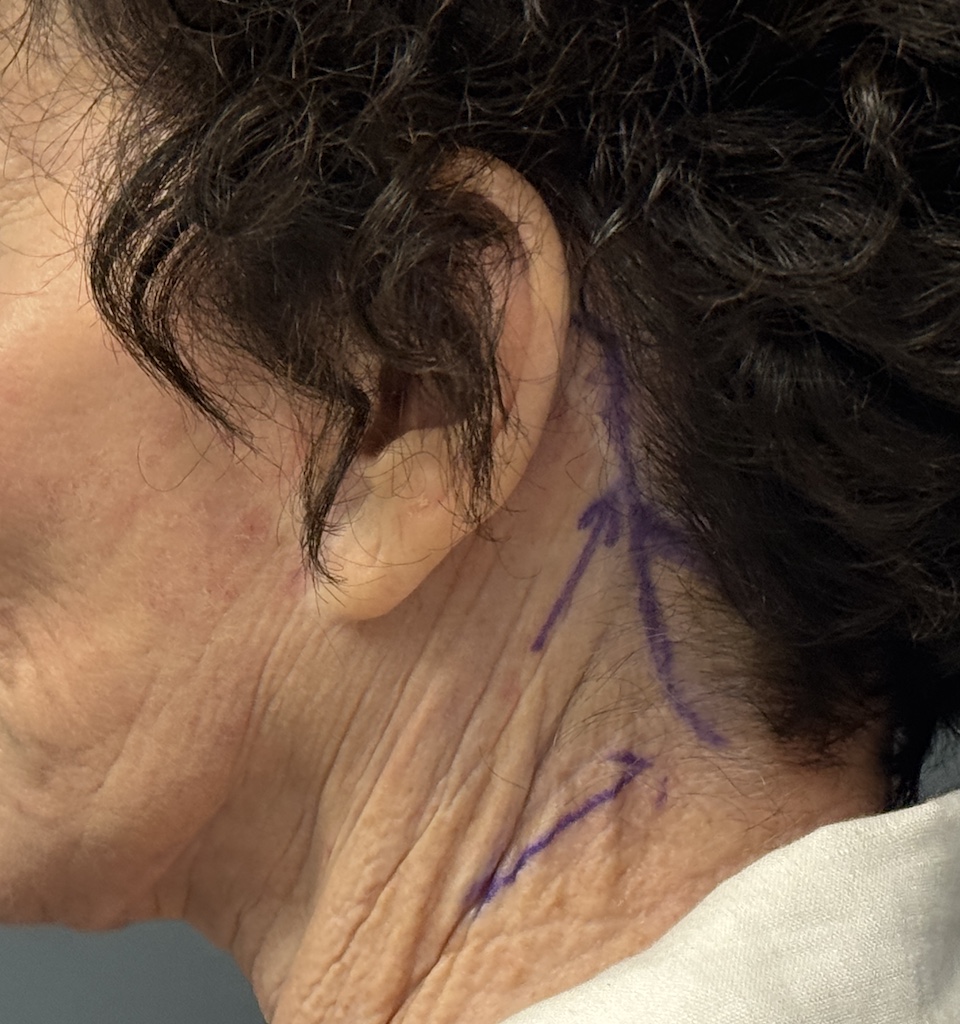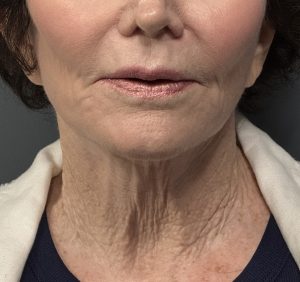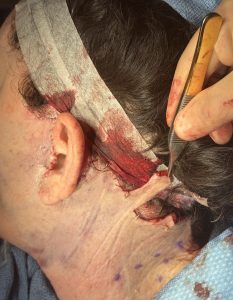While facelift surgery has many variations in technique in its objective in most patients it is a neck-jowl lifting procedure. There are numerous deeper tissue manipulations (SMAS and deep plane) but a major component of the procedure is the location, or more importantly, the extent of the incisions used to perform the procedure. In the end excess/loose face and neck skin is removed and this plays a major part in the outcome of the surgery.
The posterior part of the typical facelift incision as it wraps around the earlobe lies in the postauricular crease of the ear and then tails into or along the occipital hairline. This part of the facelift incision controls neck skin redraping completely and the jawline skin redrawing partially. The occipital hairline part of the incision typically does not need to go lower than the level off the earlobe in most patients. (many do not even need to go that low)
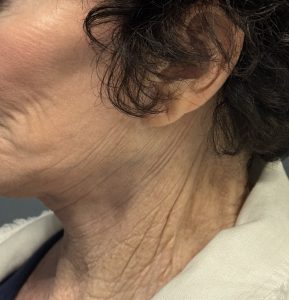
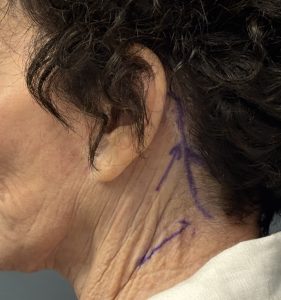
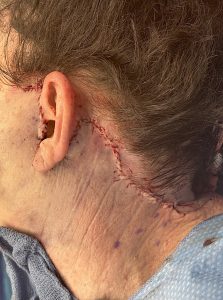
The obvious aesthetic tradeoff is the more visible hairline incision/scar. in this patient the two occipital hairline scars almost met in ythe middle of the posterior neck. But depending on the hair length and style this may be more aresthetically acceptable than the loose creepy neck skin.

